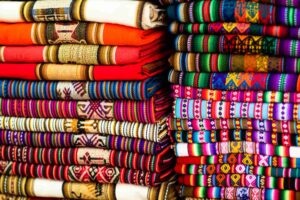Yearly, the United States imports over $80 billion in clothing and other apparel. Being such a vital industry, bringing clothes into the U.S. can be an exciting opportunity for shippers. Knowing what to expect can save time and money, whether you are importing for a business or as an individual. This article will give you a basic understanding of the importing requirements. However, contact a customs broker for more information.
Before beginning the importation process, it is crucial to research the rules, regulations, and tariffs associated with the import. Certain clothing imports are illegal to bring into the United States. An example could be apparel or textile made from cotton grown in Xinjiang, China. Various government agencies also work in conjunction with the U.S. Customs and Borders Protection (CBP) to enforce regulations for importing. Some examples of these agencies are:
- Environmental Protection Agency (EPA): Enforces regulations for importing dyed and coated clothes.
- Federal Trade Commission (FTC): Enforces regulations for labeling imports and makes sure that the correct labeling is on the imports.
- Consumer Protection Safety Commission (CPSC): Enforces regulations for the flammability of clothing imports.
Some of the Requirements
When any clothing enters the U.S., an essential requirement is that it has the proper labeling. As per the FTC, the correct labeling should describe the fiber composition, country origin, manufacturer, etc. The FTC also implements a Care Labeling Rule, where clothing imports need a label containing care instructions. The importation of wedding gowns may also follow different labeling rules than regular clothing. Wedding gowns must have at least one safe cleaning method and the applicable warnings of that method.
When goods are imported into a country, they are subjected to tariffs and duties, and clothes are no exemption. The duties have to be paid to the CBP before the importer can get a hold of their cargo. A person importing clothes into the U.S. needs to know the HTS code associated with their freight. An HTS (Harmonized Tariff System) code is used by the government to classify imports and determine the associated duties. Having the wrong HTS code may lead to a penalty and loss of the freight.
One of an importer’s essential preparations is having the correct paperwork ready. You cannot receive your shipment unless the documents are in the hands of customs. A few examples of typical documents are the bill of lading, certificate of origin, and commercial invoice. A simple way to ensure that you have the correct import documents is by hiring a customs broker. Customs brokers are individuals that specialize in the regulations and laws of the customs clearance process. They help with getting imported goods through customs.
How to Get Started
Importing clothes into the United States may not be easy, especially if it’s your first time. While intricate, you can simplify the importation process by contacting a freight forwarder and a customs broker. Freight forwarders organize the importer’s shipment and coordinate with the carrier to move the freight. Customs brokers are intermediaries between the importer and the U.S. Customs and Borders Protection (CBP). They submit the necessary documents and payments to the CBP on behalf of the importer. A1 Worldwide Logistics has these services and much more. Contact us at 305-821-8995 for a quote and get started on your shipment.






